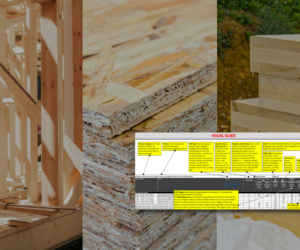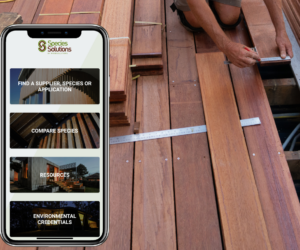Assessing moisture affected timber
The ongoing floods across Australia have stranded communities and severely damaged infrastructure and homes – but all may not be lost when talking timber.
Timber-framed construction is robust and resilient even when exposed to moisture and other extreme conditions. When adverse conditions, extreme weather or other unexpected circumstances occur there is no one size fits all approach to assessing the impact. Each instance must be evaluated on a case-by-case basis to determine the extent of any degradation and the rectification or repair that is required.
How to assess moisture affected timber
Many factors must be considered when assessing timber-framed construction that has been affected by moisture including:
- macro and micro climatic conditions
- length of exposure
- number and intensity of rain days
- sun exposure
- drying conditions and prevailing winds
- temperature
- degree of protection from weather
- for flood or tidal surge, length of time of inundation
- if the water is contaminated with chemicals or sewage, etc…
When unfinished homes and exposed timber are subject to weather, the level of degradation depends on a combination of these factors. Some structures will require extensive repair, while others will have little to no long-term damage if addressed and dried as quickly and safely as possible. Ask a professional builder to perform a detailed evaluation and the subsequent repairs and replacements.
Expert Advice
Waterlogged timber is often thrown away when it doesn’t need to be. The good news is that waterlogged timber can be saved and reused, and information is available for free on the WoodSolutions website. This includes resources for builders that can help assess if a home’s timber frame is salvageable and what people affected by flood can do to help save or protect items during clean-up.
WoodSolutions Technical Design Guide 12 – Impact and Assessment of Moisture-Affected Timber Construction has been written by experts and is backed by extensive research. The Guide has been prepared to assist the building industry and owners understand the key issues and factors that need to be considered when assessing moisture-affected timber construction and to provide some guidance on how to address these considerations.
What to do if your timber home has been flooded
Here are some simple tips that everyone can use to help preserve all or part of a home’s timber frame that has suffered from water damage for the long-term.
- Act quickly – timing is critical
Mould grows incredibly fast – sometimes as quickly as 24 to 48 hours after exposure to moisture. While mould does not damage the structural capacity of timber, it does create a health hazard, especially if timber is allowed to decay.
Once it is safe to do so, the sooner you can act to minimise damage the better.
- Expose timber to air
The most important thing to do is to open walls and other closed cavities to allow for airflow. It is usually best to remove deluged plasterboard and insulation as in most cases they are beyond salvage. They should be removed at least up to the point where wetting occurred.
Timber saturates far more quickly than it dries, but you can speed up the drying process by exposing the timber and increasing airflow with fans, if possible.
- Measure moisture content
A simple moisture meter, available from most building centres and hardware stores, can help you determine when the wood has dried.
Timber that reaches below 20% moisture content and is free of mould can generally be reused. The areas of a flood-damaged frame most likely to have the highest moisture content are bottom plates under slabs or sheet floors as well as the parts of studs that are lowest to the ground.
How quickly the timber dries after being exposed to air is dependent on different factors such as how long the timber was submerged, how soon after it being submerged it was exposed to air and local weather conditions.
- Seek advice
It can be difficult to determine what is salvageable because there are so many variables involved. Once the timber has dried, put it aside to be checked out by a professional before confirming that the timber can be reused.
- Get more information
More detailed information can be found at www.woodsolutions.com.au and by downloading Technical Design Guide 12 – Impact and Assessment of Moisture-affected Timber-framed Construction.



